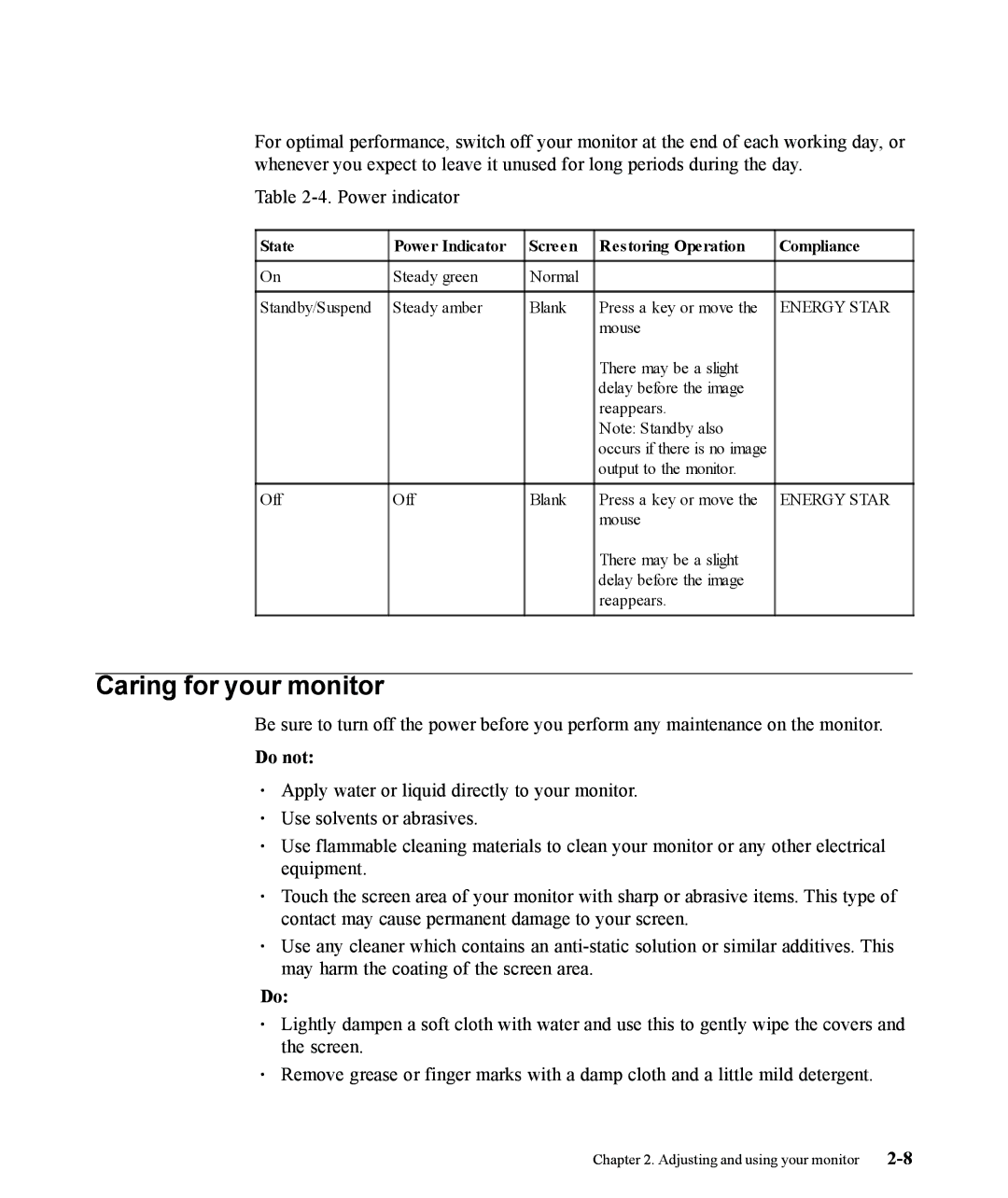For optimal performance, switch off your monitor at the end of each working day, or whenever you expect to leave it unused for long periods during the day.
Table
State | Power Indicator | Screen | Restoring Operation | Compliance |
|
|
|
|
|
On | Steady green | Normal |
|
|
|
|
|
|
|
Standby/Suspend | Steady amber | Blank | Press a key or move the | ENERGY STAR |
|
|
| mouse |
|
|
|
| There may be a slight |
|
|
|
| delay before the image |
|
|
|
| reappears. |
|
|
|
| Note: Standby also |
|
|
|
| occurs if there is no image |
|
|
|
| output to the monitor. |
|
|
|
|
|
|
Off | Off | Blank | Press a key or move the | ENERGY STAR |
|
|
| mouse |
|
|
|
| There may be a slight |
|
|
|
| delay before the image |
|
|
|
| reappears. |
|
|
|
|
|
|
Caring for your monitor
Be sure to turn off the power before you perform any maintenance on the monitor.
Do not:
·Apply water or liquid directly to your monitor.
·Use solvents or abrasives.
·Use flammable cleaning materials to clean your monitor or any other electrical equipment.
·Touch the screen area of your monitor with sharp or abrasive items. This type of contact may cause permanent damage to your screen.
·Use any cleaner which contains an
Do:
·Lightly dampen a soft cloth with water and use this to gently wipe the covers and the screen.
·Remove grease or finger marks with a damp cloth and a little mild detergent.
Chapter 2. Adjusting and using your monitor |
